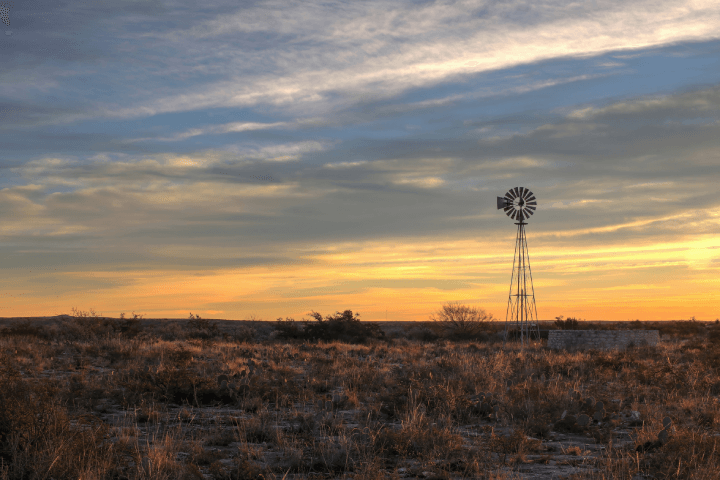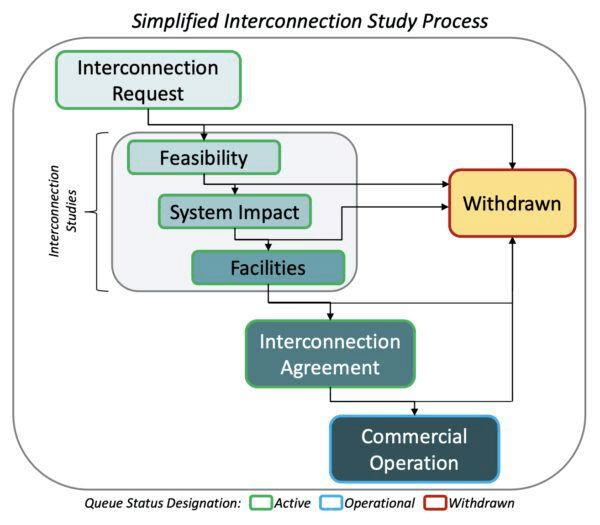The Economics of Green Energy: A Case Study of Wind Ranchers in Texas
Environment | 19-07-2023 | By Gary Elinoff
You don’t have to believe in clean energy to embrace renewable technology – you just have to like money.
John Davis owns the Pecan Spring Ranch in Wind-Swept, West Texas. When a developer offered cash in exchange for the right to install an array of wind turbines on his land in order to generate renewable energy, his initial reaction was just what you’d expect from a dyed-in-the-wool Texas Republican. As The Economist reports, John’s son Samuel informs that “Clean energy has been branded a liberal technology. People literally say, ‘this is AOC coming into town’”1. But then John examined the economics and changed his tune.

As it turned out, the Davis family can get $8 an acre raising cattle, $15 an acre from deer hunters, but many hundreds of dollars by hosting wind turbines. As might be expected, love of profit triumphed over anti-green sentiment. The attitude was summed up by Michael Webber, a professor of energy at the University of Texas. As he puts it, “It’s not unusual for Texas to do the right thing for all the wrong reasons.”1
Don’t you Dare call it Environmentalism, you hear now? Call it Making Money!
And making money, it certainly does. The family is now the happy host of seven cash-gushing wind turbines. Samuel himself is now part of the Texas Land and Liberty Coalition, an organization devoted to promoting wind and solar energy among ranchers. And it keeps on getting better – the family bought a filling station, removed the gas pumps and reconfigured it into an electric vehicle (EV) charging station. And, oh yes, there is also an on-site farmers market, leaving no cash-generating stone unturned.
You do not have to Believe in Climate Change to Support Renewables
And that’s a good thing because, in the US, the wind blows the strongest in a swath of land beginning in North Texas and extending northwards through Oklahoma, Kansas, Nebraska and the Dakotas. These are places run by Republican governments and peopled by citizens that don’t believe in any kind of “climate crisis”.
As described by Matt Welch, head of the Conservative Texans for Energy Innovation, a pro-renewables group, the term “green energy” is a serious no-no. As Welch describes it, “When someone says we are embracing green energy, it’s like shoving an ice pick through our ears”. He goes on to state that “We just say clean energy.”1
On the other hand, this conservative polity always responds vigorously to business-friendly, free-market arguments. Wind turbines and solar plants can be described as essentially the fixed plant that must be built in order to enter into a new business – no different than the fixed investment needed to burn coal or natural gas. The added benefit is that, unlike coal or gas, the sun and wind are free! Now you’ve got the undivided attention of even the most conservative of capitalists.
The Davis family is far from alone in sucking up the tax credits offered by President Biden’s Inflation Reduction Act (IRA). A gamut of Republican-led states are lining up to feed at this juicy new federal trough. The famously conservative Koch Industries group is itself backing up bids to build a battery factory in Georgia.1
A very important factor to consider is that although chemists and engineers worldwide are working on energy storage technologies, as of this writing, there is nothing on the horizon that can store energy long-term. A lump of coal or a barrel of oil retains its energy potential for, well, eternity. On the other hand, batteries leak power, mechanical devices are comically inefficient, and liquid hydrogen is fraught with difficulties. For that reason alone, hydrocarbons will be with us for decades to come, perhaps in the form of “peaker plants” that come online when the sun doesn’t shine and the wind doesn’t blow.
As William Driscoll, an expert in renewable energy and author at PV Magazine, points out, "Interconnection costs for solar, wind, and storage are higher than for natural gas"3. This further emphasizes the need for financial and policy support to make renewable energy more competitive.
Guess who the US leader in Renewable Energy is?
If you guessed California, you guessed wrong! According to Welch, the clear winner is Texas. His organization points out that for the second quarter of 2022, Texas had three times more solar, wind and battery storage being built than did California. And that’s not all - the US Energy Information Administration has predicted that for the year, renewables in Texas will actually be the source of more electricity than generation based on natural gas.
The US Has Billions for Wind and Solar Projects. Good Luck Plugging Them In2
Say what you will about Texas, but when the powers that be decide that they want something to get done, it gets done. The rest of the US, not so much. As reported in the New York Times, there are a staggering 8100 energy projects, solar, wind and batteries, waiting to be connected to the country’s patchwork system of dozens of separate electric networks.
There are two parts to this mess. First, there’s BIG MONEY involved here, and of course, everybody wants a piece of the pie. There are also numerous local objections, some serious but many frivolous. The other question is who’s going to pay the cost of constructing the power lines that bring energy from the remote areas where the power is generated into the centers of industry and population where that power is actually needed.
1700 GW of Solar, Wind and Storage Await Interconnection, up 28% in a year3
This was reported by the Federal Energy Regulatory Commission (FERC). According to this report, cited in PVMagazine, the problem is getting worse, as the source noted that this is a nearly 400 GW increase over the previous year.
A proposed interconnection must go through a series of difficult stages, including Feasibility Studies, System Impact Studies and Facilities Studies, before an Interconnection Agreement can be considered.

The road to project interconnection. Image source Berkeley Labs, provided by PVMagazine
President Biden’s IRA may provide hundreds of billions of dollars of subsidies for clean energy, but it does nothing to overcome permitting issues and local opposition. Oftentimes, developers simply give up. As described by Piper Miller of Pine Gate Renewables, a major solar power and battery developer, “From our perspective, the interconnection process has become the No. 1 project killer”. 2
FERC notes that a possible solution, which some transmission operators are beginning to employ, involves the use of cluster studies or submitting several projects to be considered simultaneously.
Contrast this helter-skelter process with what is done in, once again, Texas. Right from the beginning, they realized that their power networks would not be able to carry all that great, free wind and solar energy from where it’s generated to where it’s needed. As a result, they invested in a multi-billion dollar power line upgrade accessible to all. A similar breakthrough was achieved by MISO, a Midwest grid spanning 15 states. MISO’s Aubrey Johnson sums it all up with his statement that “The hardest part isn’t the engineering, it’s figuring out who’s going to pay for it.” 2
The Technical Challenges of Interconnecting Renewable Energy Sources
Interconnecting renewable energy sources to the grid is not just a financial challenge but also a technical one. The US Federal Energy Regulatory Commission (FERC) reports that about 1,700 GW of utility-scale solar, wind, and storage projects are currently awaiting interconnection, a nearly 400 GW increase from the previous year.3 This backlog is due to the unprecedented number of interconnection requests from these projects.
References

